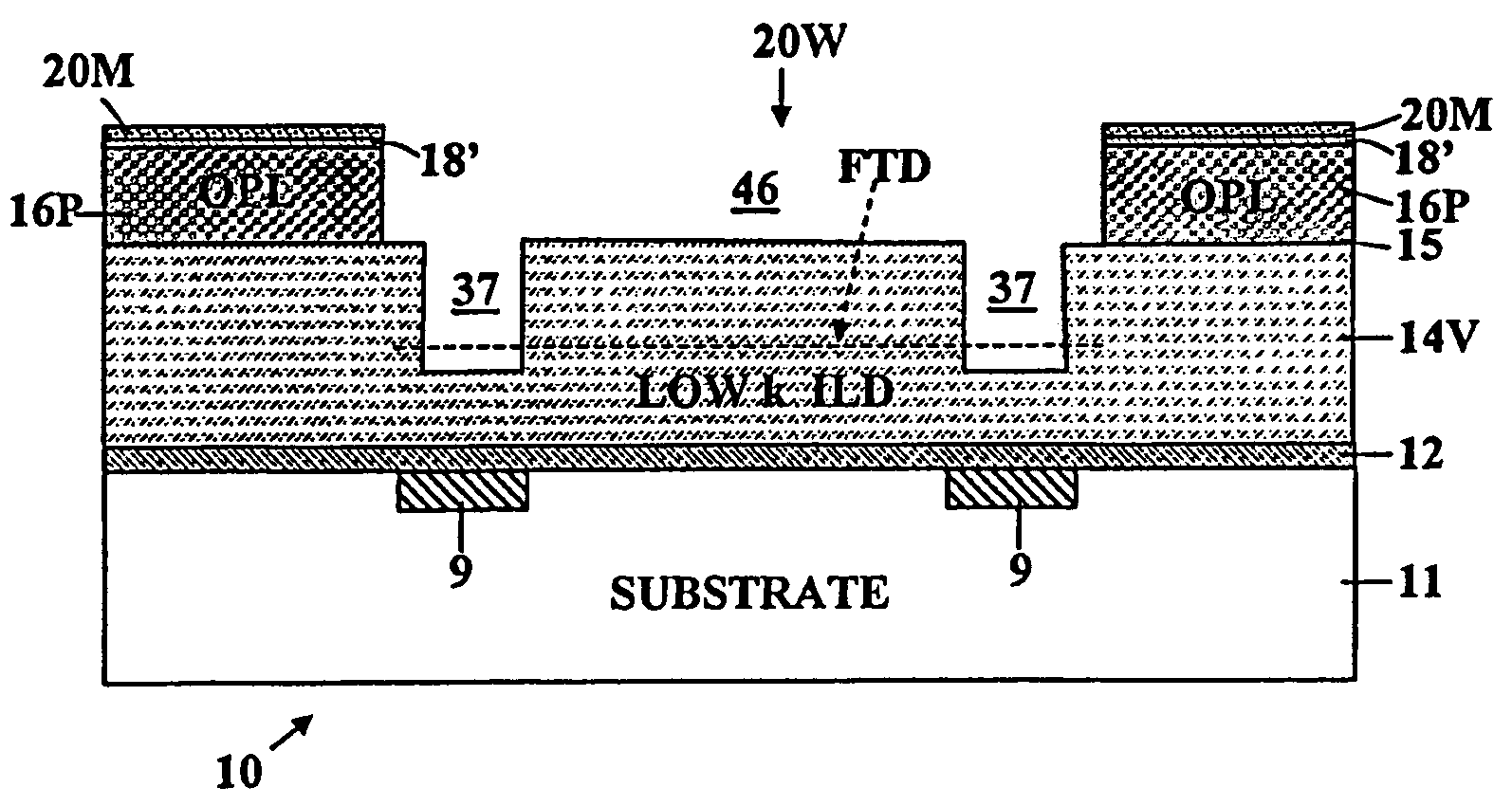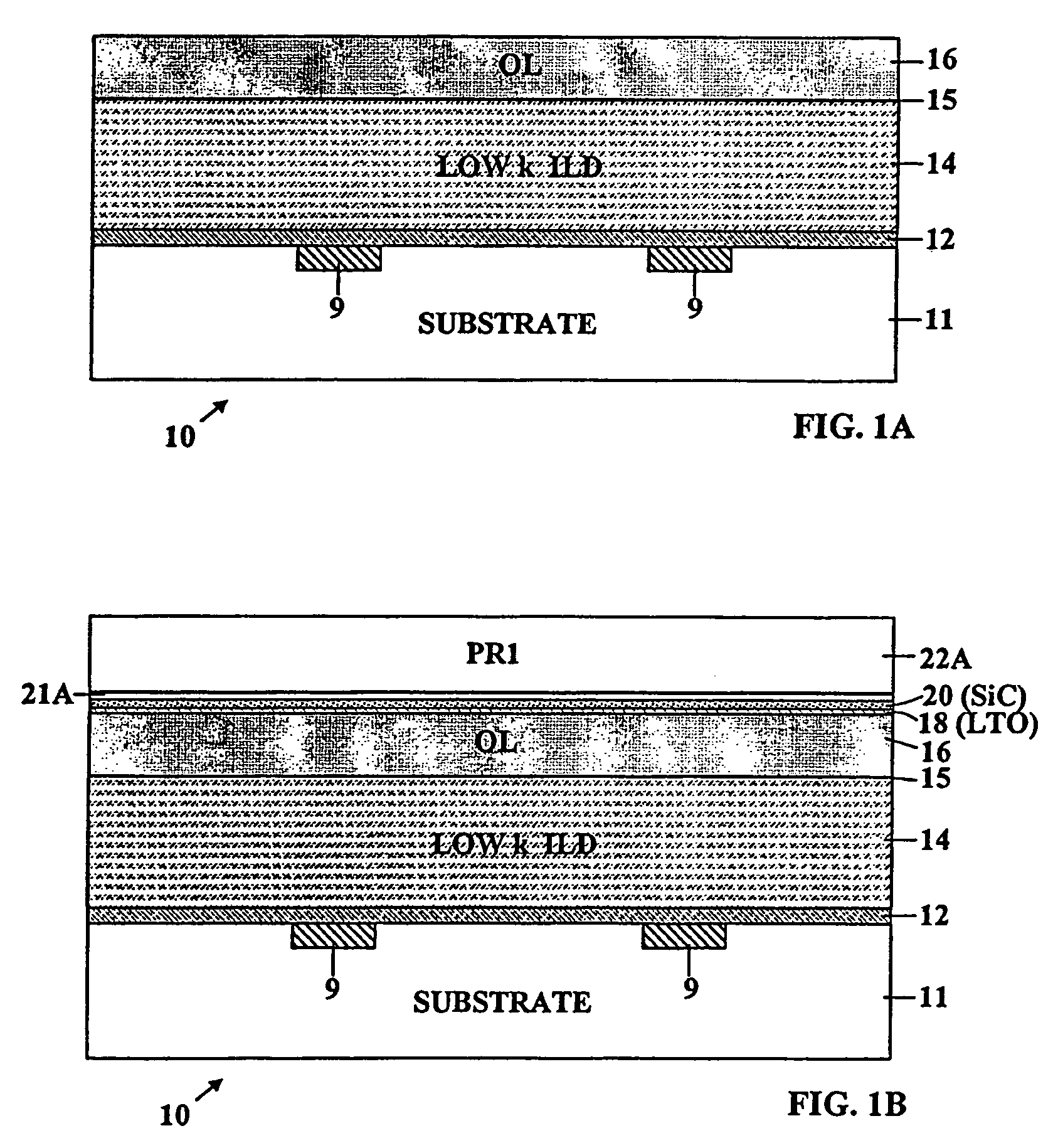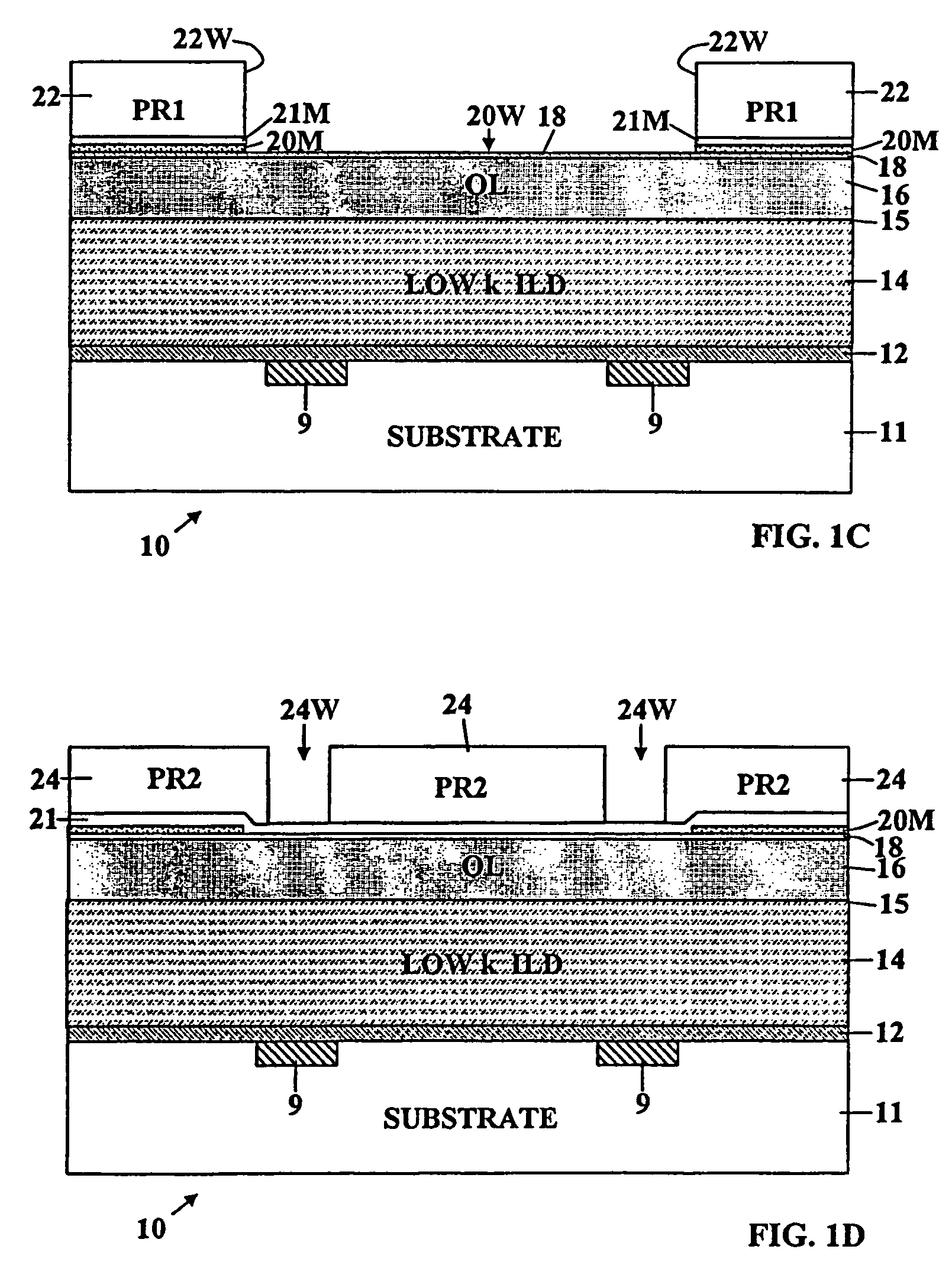Integrated dual damascene RIE process with organic patterning layer
a dual-damascene, organic technology, applied in the manufacturing of semiconductor/solid-state devices, basic electric elements, electric devices, etc., can solve the problems of increasing the damage to the exposed dielectric, imposing the burden of requiring a greater total processing time for dual-damascene formation, and insufficient remaining thickness of the remaining layer to withstand the duration of the ild etching step, etc., to achieve the effect of reducing the stripping time for the trench
- Summary
- Abstract
- Description
- Claims
- Application Information
AI Technical Summary
Benefits of technology
Problems solved by technology
Method used
Image
Examples
example 1
[0028]After the OL layer 16 is deposited, the lower, via hard mask layer 18 of a thickness of about 35 nm of silicon oxide is deposited thereover. Over the lower, via hard mask layer 18, a second, toy, trench hard mask layer 20 composed of Si3N4 of a thickness of about 30 nm is deposited. The photoresist mask 22A and ARC layer 21A for trench definition are applied and developed and a plasma etch is used to etch the Si3N4 top, trench hard mask layer 20 and stop on or in the silicon oxide lower, via hard mask layer 18. Plasma etch conditions for this selective etch include an RF (Radio Frequency) system operating at 27 MHz and 2 MHz in a parallel plate configuration. Operating pressure is in the range of 30 to 60 mTorr and gases include Ar, CHF3 or CH2F2, and CO with flows at 300 sccm, 30 sccm, 50 sccm and 200 sccm respectively. The amount of power applied to the electrodes is of the level of 350 watts and 100 watts for the 27 MHz and for the 2 MHz frequencies, respectively. Typical e...
example 2
[0029]After the OL layer 16 is deposited a lower hard mask layer 18 of a thickness of about 15 nm of silicon carbide is deposited. Over this layer the top hard mask layer 20 of Si3N4 of a thickness of about 30 nm is deposited. The photoresist 20A and ARC 21A for trench definition are applied and developed and plasma etch is used to etch the Si3N4 of the top hard mask layer 20 and stop on or in the silicon oxide of the lower hard mask layer 18. Plasma etch conditions for this selective etch include an RF system operating at 27 MHz and 2 MHz in a parallel plate configuration. Operating pressure is in the range of 30 to 60 mTorr and gases include Ar, CF4 and CHF3 and O2 with flows at 300 sccm, 80 sccm, 30 sccm and 10 sccm respectively. The amount of power which is applied to the electrodes is of the level of 500 watts and 100 watts for the 27 MHz and for the 2 MHz frequencies, respectively. Typical etch times are short and are of the order of less than 50 seconds. The transition of the...
PUM
 Login to View More
Login to View More Abstract
Description
Claims
Application Information
 Login to View More
Login to View More - R&D
- Intellectual Property
- Life Sciences
- Materials
- Tech Scout
- Unparalleled Data Quality
- Higher Quality Content
- 60% Fewer Hallucinations
Browse by: Latest US Patents, China's latest patents, Technical Efficacy Thesaurus, Application Domain, Technology Topic, Popular Technical Reports.
© 2025 PatSnap. All rights reserved.Legal|Privacy policy|Modern Slavery Act Transparency Statement|Sitemap|About US| Contact US: help@patsnap.com



